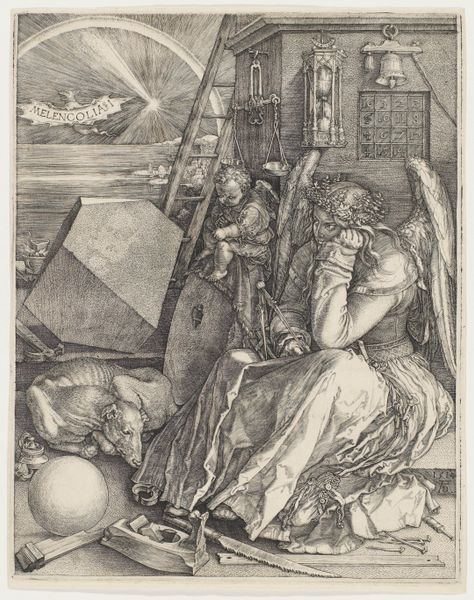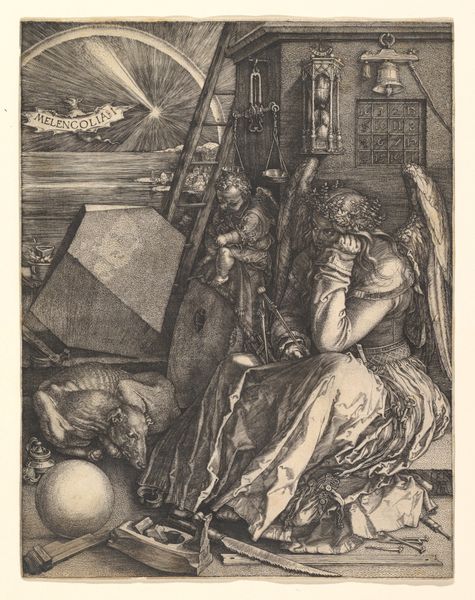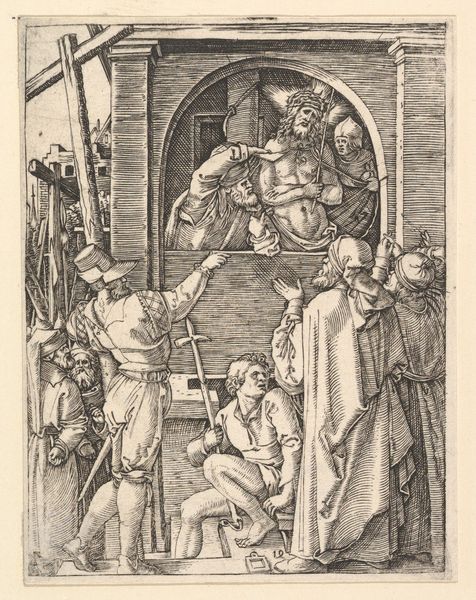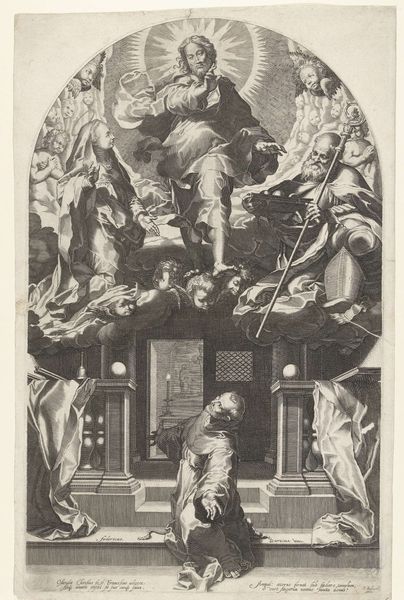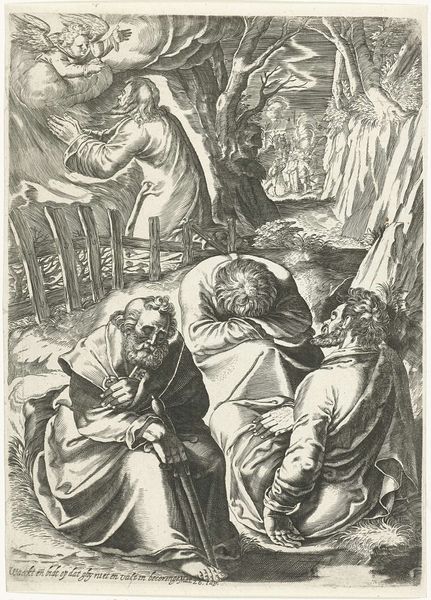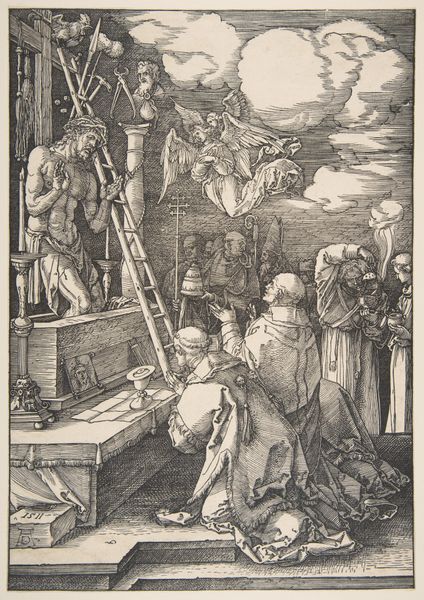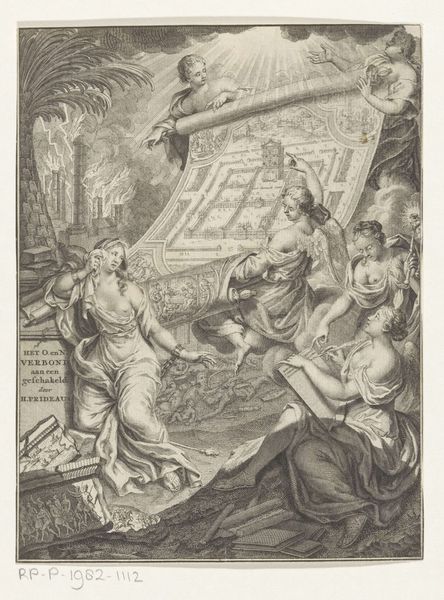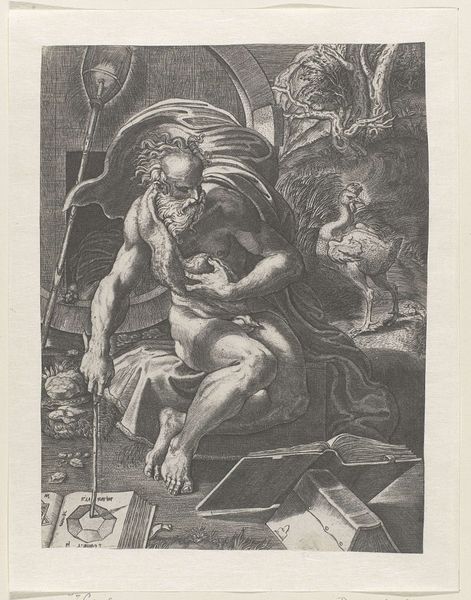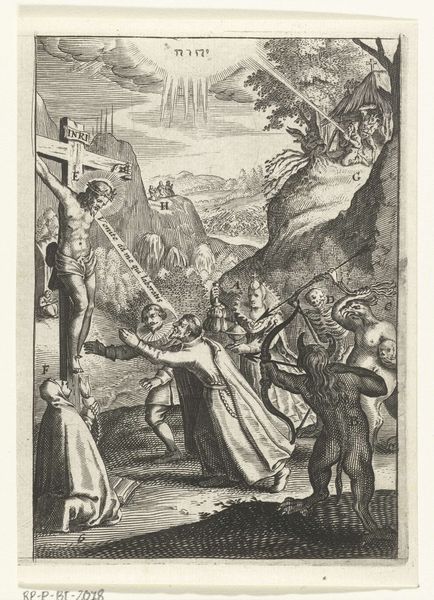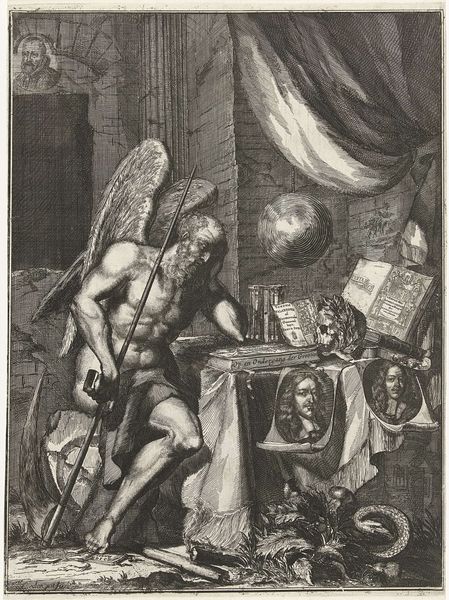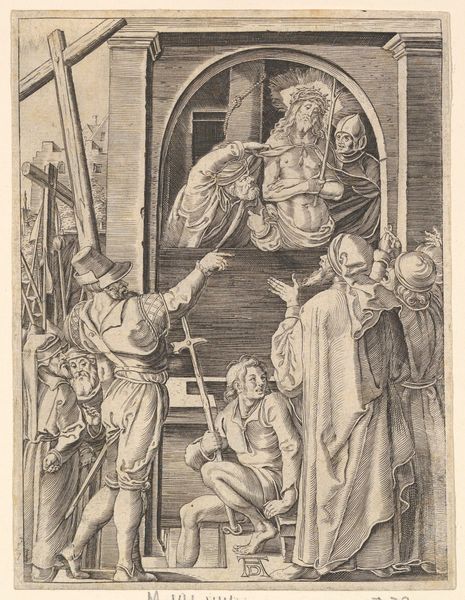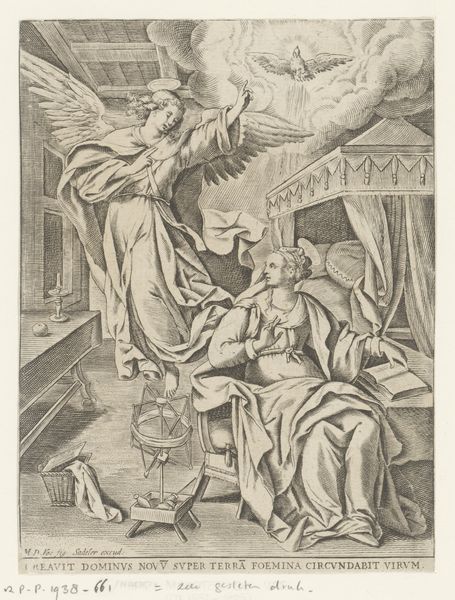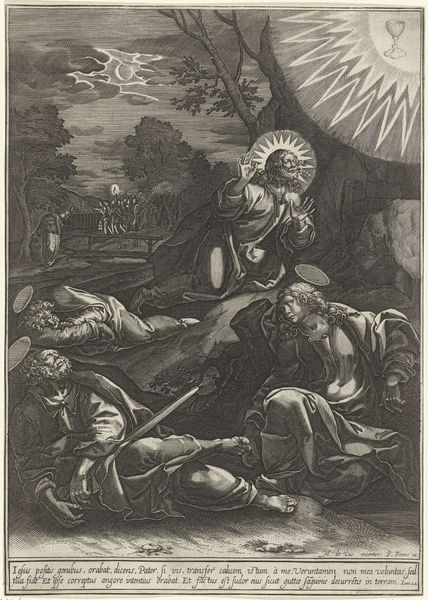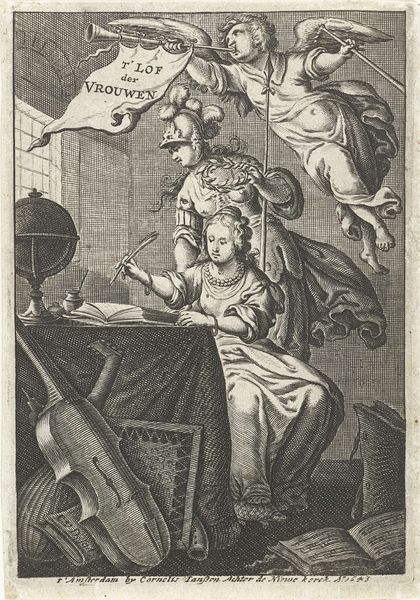
Dimensions: height 238 mm, width 189 mm
Copyright: Rijks Museum: Open Domain
Wierix produced this engraving, "Melancholie", sometime between 1550 and 1620, and it presents a complex allegory of artistic creation and its relationship to intellectual despair. Made during a period of immense religious and political upheaval in the Netherlands, this image reflects a society grappling with change. The figure of Melancholy, surrounded by tools of architecture and science, seems paralyzed, unable to find solace in the instruments of progress. The magic square and other symbols suggest a world where reason and enlightenment offer no escape from a deeper existential angst. The engraving invites us to consider the social role of the artist during the reformation: were they progressive figures of social change or conservative artisans? By examining Wierix’s print alongside the theological debates and socio-economic conditions of his time, using resources from the Rijksmuseum archive, we gain insight into how art served as a mirror—reflecting, questioning, and sometimes even challenging the very foundations of a changing world.
Comments
No comments
Be the first to comment and join the conversation on the ultimate creative platform.
